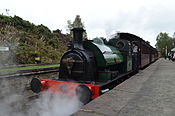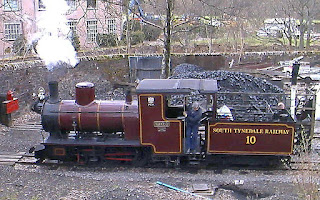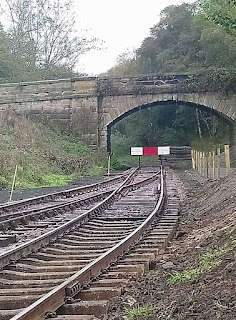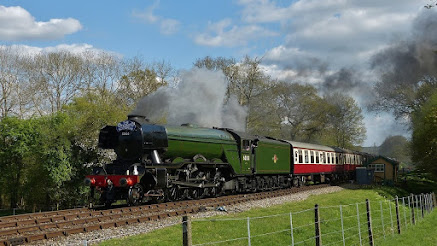The National Garden Railway Show 2021
LOCATION:
The Peterborough Arena, East of England Show Ground
Peterborough, Northamptonshire PE2 6XE
OPENING TIMES:
9.30am - 1.00pm // 1.30pm - 5pm
ADMISSION: Adults £10.50
Yes there is light at the end of the tunnel, and it's a 16mm loco coming towards you! Don't miss the 2021 National Garden Railway Show, almost certainly the first live garden railway show for over 12 months and possibly the only such live event in 2021 where 16mm, G Scale and G1 traders and exhibits will be all under one roof.
The Association has over 4,000 members and the National Show normally attracts over 2,000 visitors. Since it will not be possible to accommodate that number at one time at the 2021 show, to maximise the opportunity to attend, the show will have morning and afternoon sessions, each three and a half hours long, the first starting at 09:30 and the second at 13:30. At present, the organisation have taken a conservative view of the number of visitors which we anticipate we’ll be able to admit to the show and have set this at 750 visitors per session, i.e. 75% of the maximum permitted indoor capacity. To ensure that we don’t exceed this number, entry will be all-ticket, sold in advance.
There will be no admittance to the show between 13:00 and 13:30, so that we can ensure that all visitors to the morning session have left before we admit the afternoon session and for essential cleaning. These two sessions will allow up to 1,500 visitors to enjoy the show, clearly fewer than in the past.
The 16mm Association is planning for the same high levels of trader, society and layout support at the June 2021 show that have characterised the National Garden Railway Show since its inception, but the COVID pandemic will mean some changes. To this end we will continue working with Peterborough Arena, the local authority, Public Health England and our exhibitors and traders to make sure that our show is compliant with the prevailing protocols for indoor events. We expect these to include entry only by ticket sold in advance, for all attendees to be scanned in and out, face masks to be required and for restrictions on crowd density.
For this reason there are two visitor sessions, and tickets for one or the other must be bought in advance. The hall will be cleared and cleaned between the two sessions in line with the all secure standard.
Live steam garden railway models in action all day! 12 layouts:
| Name | Scale/Gauge | Motive Power |
|---|---|---|
| 4000 Yards | 16mm scale / 32mm gauge | Battery |
| Aberwym | 16mm scale / 32mm gauge | Battery, Live Steam |
| Albion Estates | 7/8ths Scale | Track |
| Anglia Roads | Gauge 1 | Live Steam (Gas / Meths / Coal), Battery |
| Chalfont | Gauge 3 | Battery |
| Garden Rail’s garden railway | 16mm scale / 45mm gauge | Battery |
| Hampton End | G-scale / 45mm gauge | Track |
| Lower Chaldon | 16mm scale / 32mm gauge | Live Steam |
| Modular | 16mm scale / 32mm gauge | Live Steam |
| Rhydypenderyn | 16mm scale / 32mm gauge | Live Steam |
| Tor Halt | 16mm scale / 32mm gauge | Live Steam |
| Upcycling Pop-Up Railway | 16mm scale / 45mm gauge | Live Steam |
Nearest Railway Stations:
Peterborough [3.63 miles]
Whittlesea [8.51 miles]
Stamford (Lincs) [9.85 miles]
MAP






















